Tesla’s Powerwall, with its robust product performance, brand strength, and the comprehensive Tesla ecosystem, firmly holds the position of a unicorn in the U.S. home energy storage market. It has become a phenomenal product in the home energy storage industry, outshining competitors in various aspects. Let’s analyze the Tesla Powerwall from different perspectives.
1. Product Line
In 2015, Tesla released the first generation Powerwall with a capacity of 6.4 kWh.
In 2016, the second generation Powerwall 2 was introduced with an increased storage capacity of 13.5 kWh and integrated battery inverter.
In 2021, the latest model, Powerwall+ (also known as Powerwall 3), was released. It maintains a capacity of 13.5 kWh and introduces an integrated solar inverter in addition to its existing features.
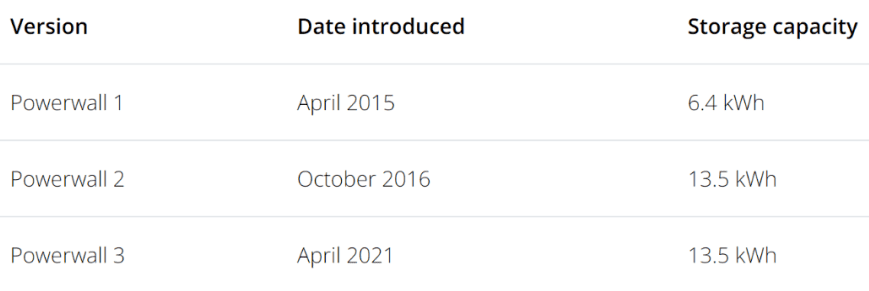
2. Model Specifications
Currently, there are two different models of Powerwall available for purchase: Powerwall 2 and Powerwall+.
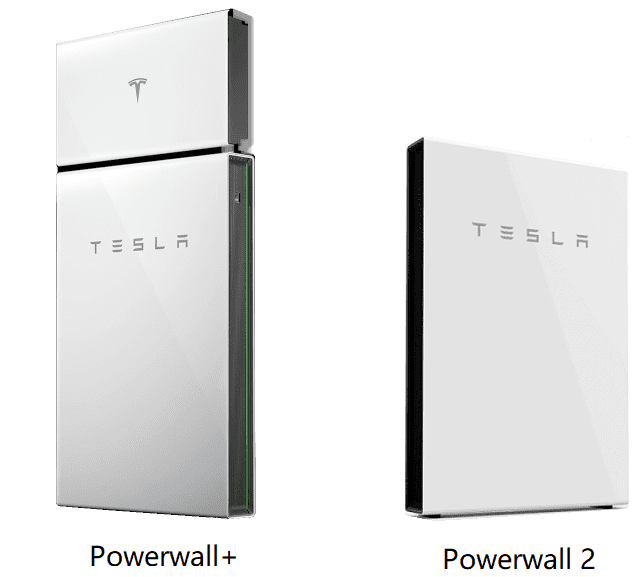
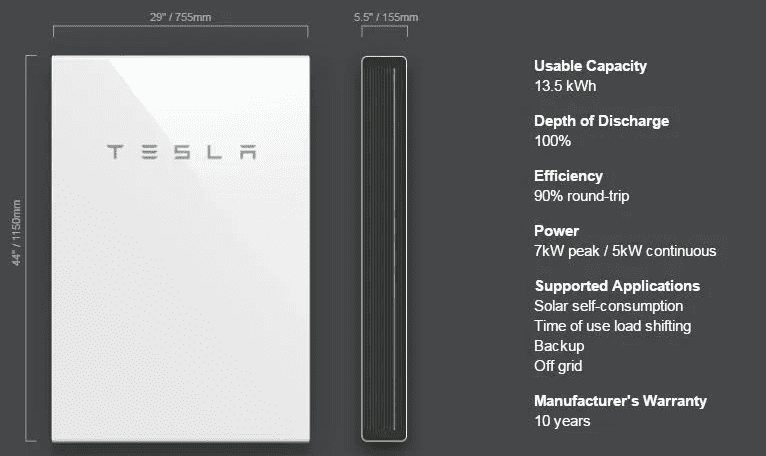
Specifications for Powerwall 2
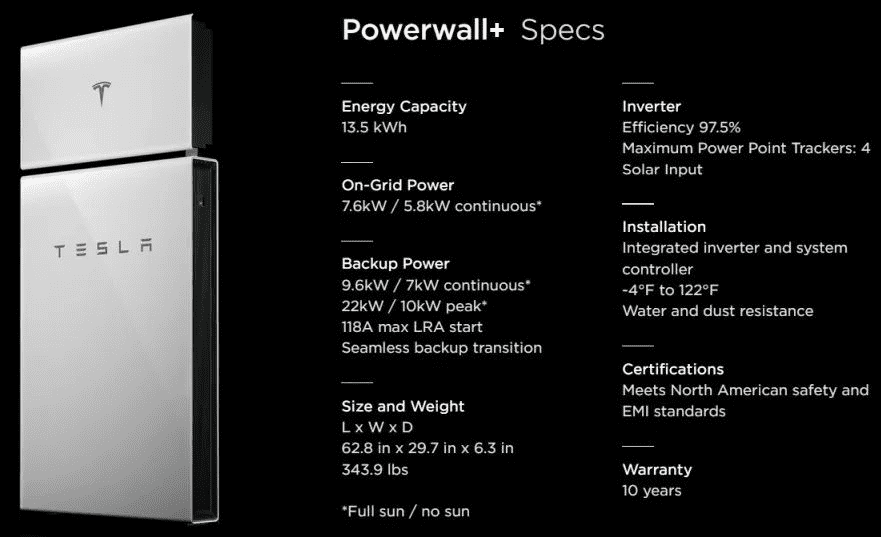
Specifications for Powerwall+
Powerwall 2 integrates energy storage batteries and a battery inverter, making it an AC-coupled type home storage product. Powerwall+ integrates energy storage batteries, a battery inverter, and a solar inverter, making it a DC-coupled type home storage product. It is more suitable for homes with newly installed solar energy systems.
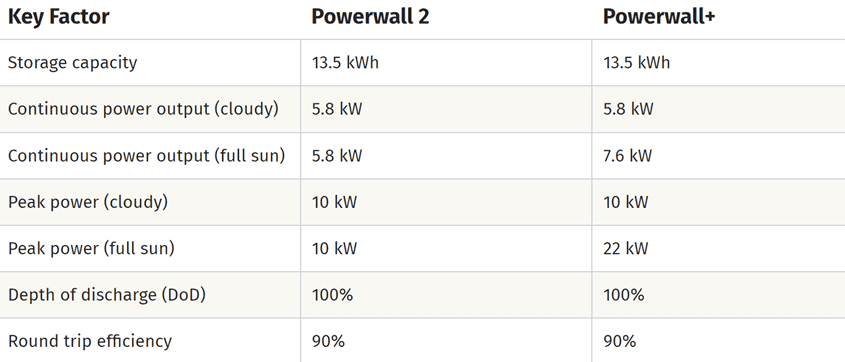
3. System Composition
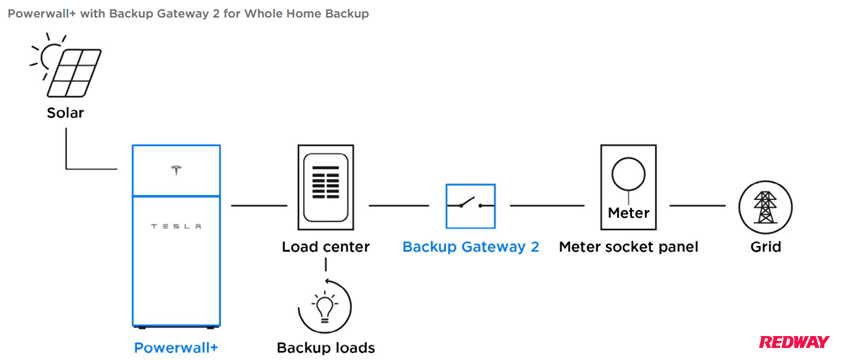
· Powerwall:
An energy storage battery used for storing electricity. It utilizes Panasonic’s NMC cylindrical lithium-ion batteries and is the only household storage product with liquid cooling for heat dissipation. It can operate within a temperature range of -20°C to 50°C.
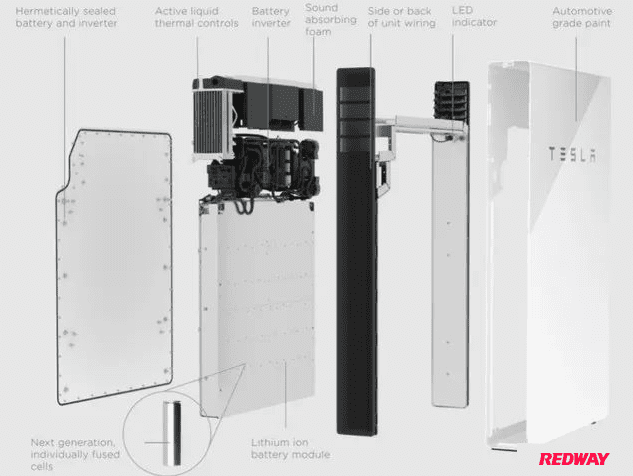
· Tesla Gateway (Backup Gateway 2):
An intelligent gateway control box used for connecting solar power systems and the grid, monitoring grid outages, tracking energy usage, and controlling backup power functions. The latest version of Backup Gateway 2 is compatible with both Powerwall 2 and Powerwall+.
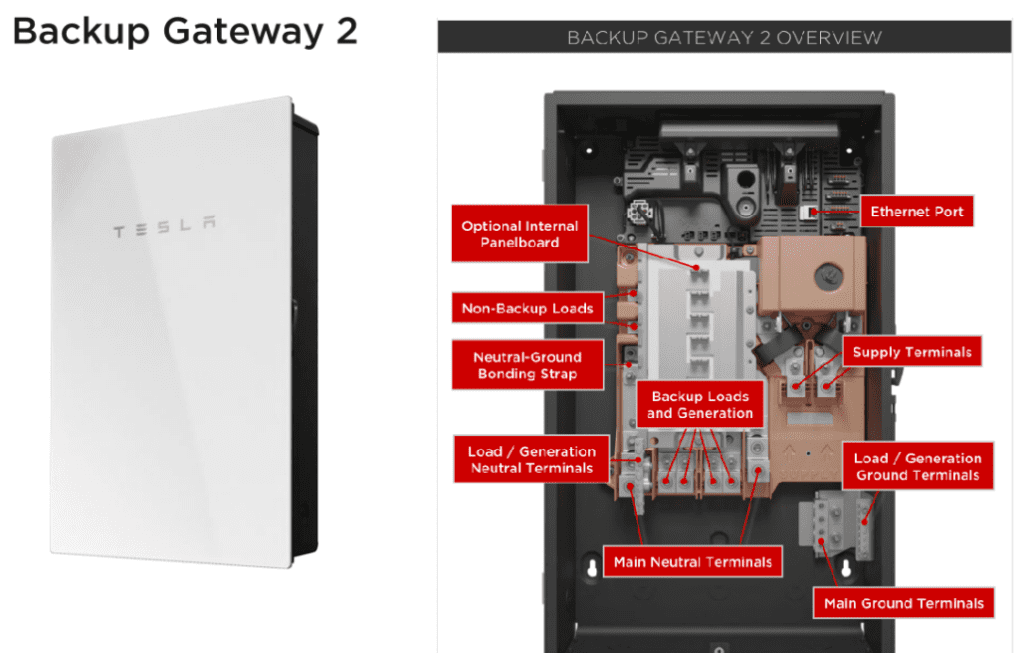
· Backup Switch:
This device is used to monitor grid outages and is suitable for a whole-house backup power setup in homes. Approval from the power company is required for installation.
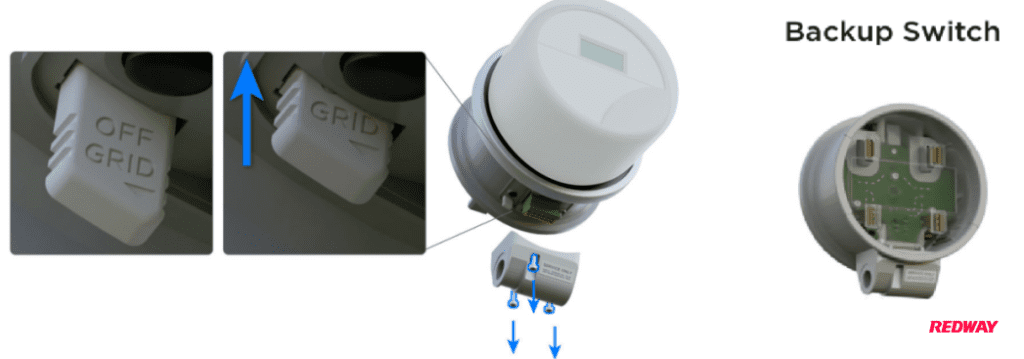
· Tesla SolarShutdown Device:
In compliance with the National Electrical Code (NEC) requirements issued by the National Fire Protection Association (NFPA) in the United States, this device is a rapid shutdown switch mandatory for installation beneath solar panels. It enables the swift shutdown of the solar energy system in the event of safety risks.

When users choose to install the Powerwall system, the wiring structure is categorized into “Whole Home Backup” and “Partial Home Backup” based on whether they want the Powerwall to provide backup power to all household appliances during a grid outage or not.
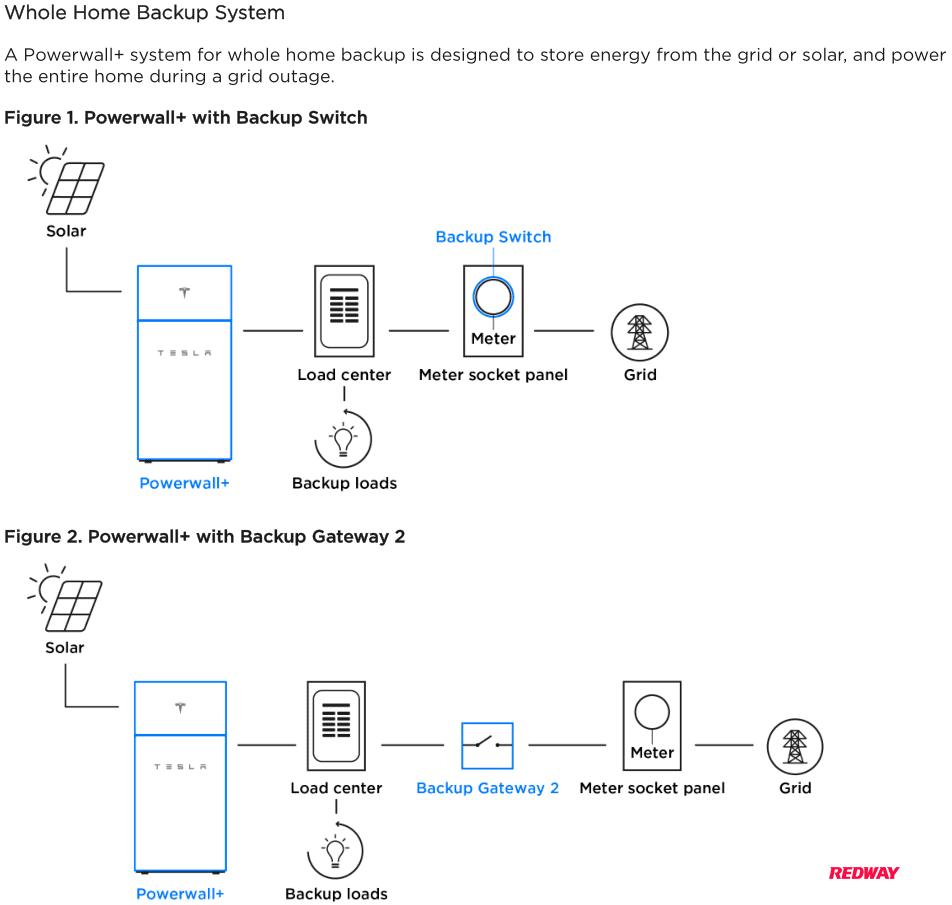
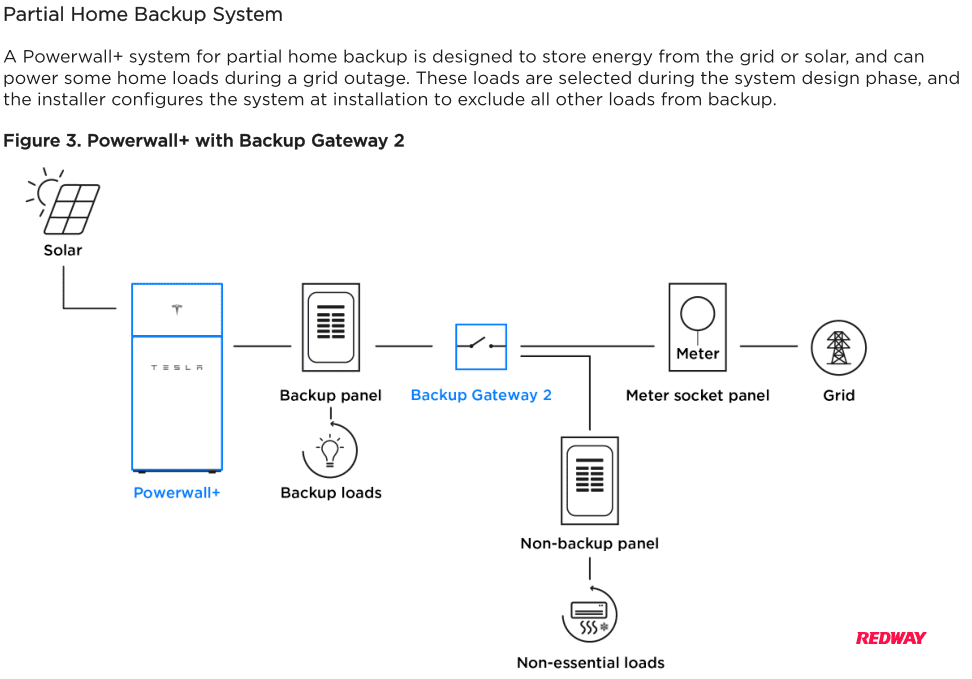
4. Operating Modes
· Self-powered Mode:
Self-powered mode, also known as solar self-consumption mode, involves storing excess solar energy generated during the day for use during the night. The battery charges from solar energy until it reaches the user-set State of Charge (SOC) level. If the battery still cannot accommodate surplus solar generation, the excess can be fed back to the grid. This mode maximizes cost savings by efficiently utilizing excess solar generation.
· Backup Mode:
Backup mode, also known as emergency power mode, allows the Powerwall to provide backup power to the home during a grid outage. Users can adjust the battery’s State of Charge (SOC) level based on the amount of power they need during a power outage.
· Time-based Mode:
Time-based mode, also known as time-of-use mode, enables the Powerwall to align with the time-of-use pricing structure of the user’s contracted utility company. The Powerwall charges during periods of lower electricity costs and discharges during peak-cost periods to power household appliances, thereby optimizing cost savings.
5. APP
Users can configure the three operating modes of Powerwall, adjust the battery’s State of Charge (SOC) level, and monitor home energy usage through the Tesla App. Additionally, the app provides a “Weather Storm” feature that allows real-time reception of weather forecasts from the national meteorological agency. When extreme weather alerts are received, the app can automatically charge the battery, providing backup power needed during a grid outage. If the home has a Tesla charging station, the app can also set aside a portion of Powerwall’s capacity for charging electric vehicles during a grid outage.
6. Price
As of 2023, the latest prices for purchasing Powerwall directly from TESLA range from $9,200 to $14,200. This price does not include additional state or federal incentives, such as the federal solar tax credit. The unit price decreases when purchasing multiple Powerwalls.
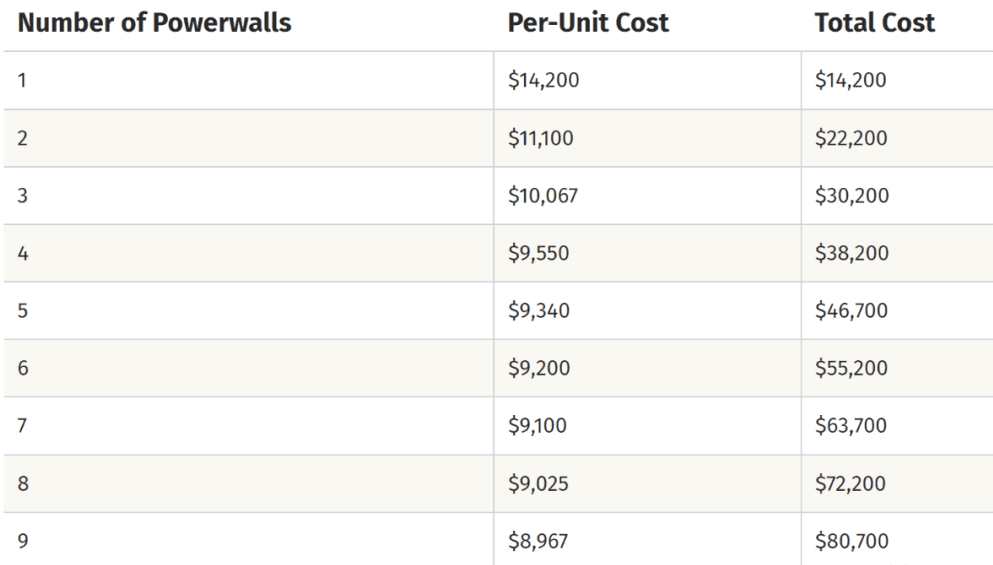
In March 2023, TESLA announced through social media that its new Powerwall Direct service allows users in the U.S. market to individually purchase Powerwall without the requirement to buy Tesla’s solar roof, etc. However, compared to standalone Powerwall orders, TESLA will still prioritize scheduling deliveries for orders of complete solar energy systems. The starting price for a standalone Powerwall is $9,200, and it includes the following costs: $8,000 for the Powerwall, $1,000 for the Gateway Wi-Fi device, and $200 for accessories.
When ordering multiple standalone Powerwalls, there is no need to repay the Gateway Wi-Fi device fee of $1,000 and the accessory fee of $200. For example, if a user orders two standalone Powerwalls, they only need to pay $17,200 ($16,000 + $200).
Due to the limited availability of the Powerwall Direct service, users also have the option to purchase Powerwall from TESLA-authorized installers. Different installers may offer different quotes, and prices range from $15,000 to $18,000. Additionally, purchasing a Powerwall qualifies for a 30% federal solar tax credit. For example, taking the quote of $10,176 for a standalone Powerwall in Texas, after subtracting the 30% federal solar tax credit subsidy, the cost is reduced to $7,123.
In addition to the 30% federal solar tax credit, there are also additional subsidies available at the state and local levels that can be applied for.
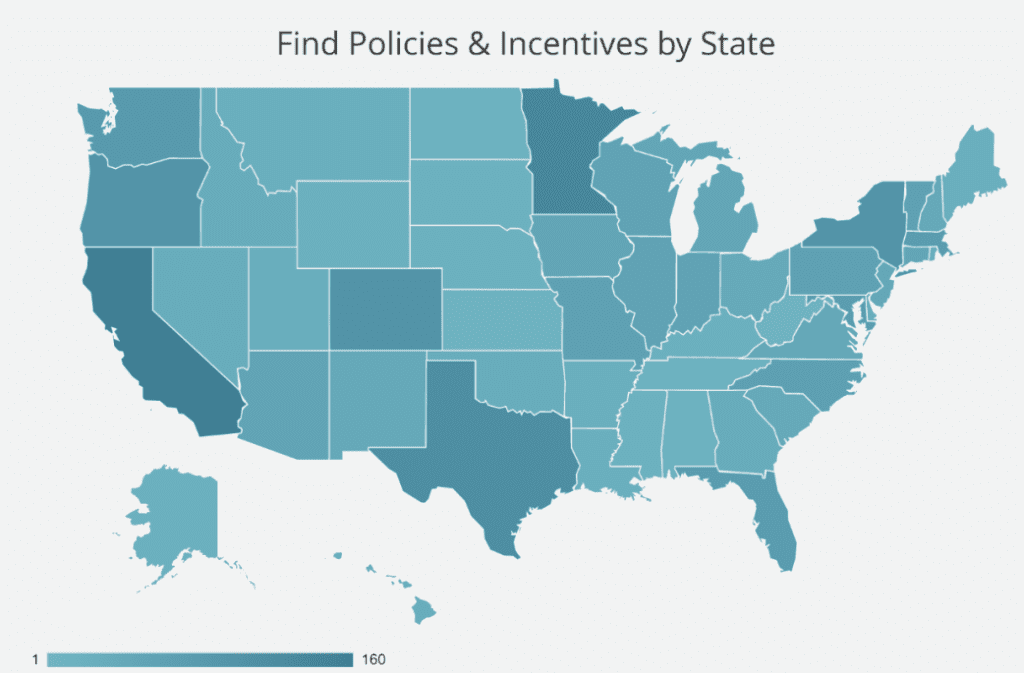
7. Benefits of using TESLA Powerwall
· Enhancing Energy Independence:
Powerwall can store excess solar energy, reducing a household’s reliance on the grid. During grid outages, Powerwall can provide backup power to the home.
· Reducing Carbon Footprint:
Powerwall contributes to increased use of clean energy, reducing the demand for expensive fossil fuels. Relying on renewable energy helps decrease carbon footprint and greenhouse gas emissions.
· Reducing Electricity Bills:
Powerwall can lower electricity bills by harnessing solar energy for power generation.


